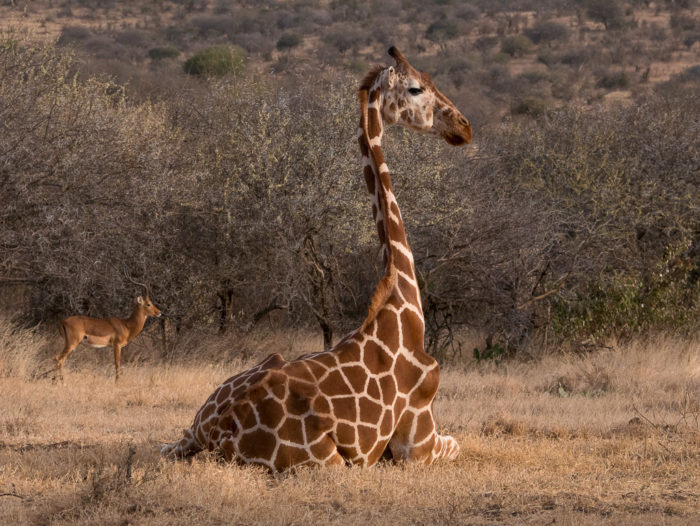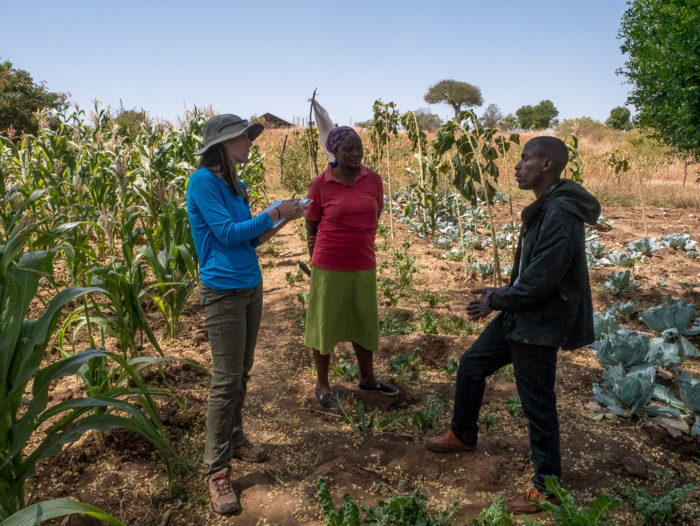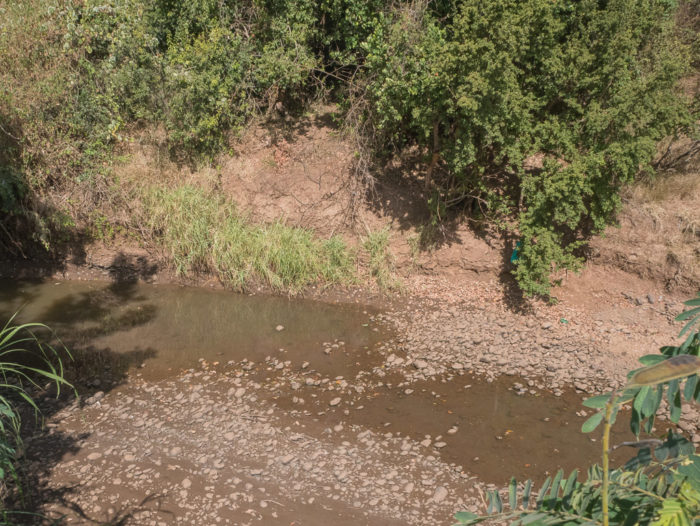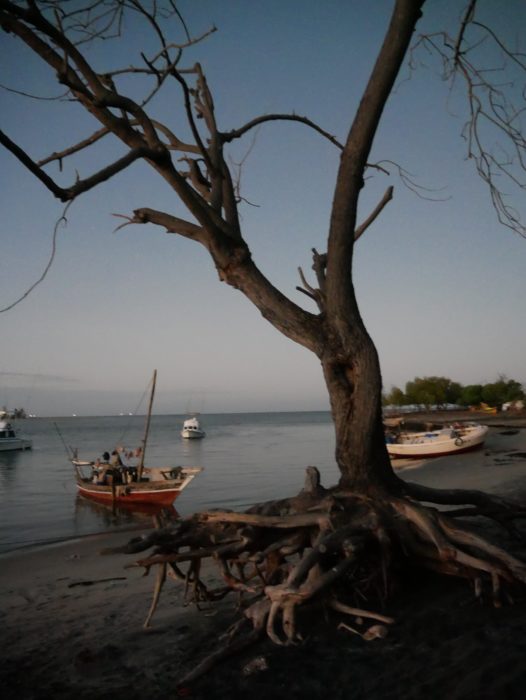February took me to Laikipia, Kenya, where I lived for most of the month at Mpala Research Centre. Mpala is a research base run by Princeton University that sits on a large ranch filled with wildlife, very close to Mount Kenya and the Equator. Researchers come from all over the world to conduct their fieldwork here. Kenya was nearing the end of the dry season when I arrived, and Mpala was surrounded by dust and little water.

Dr. Cheryl Palm, a professor in my Agricultural and Biological Engineering department at University of Florida, is one of these researchers. She gave me the task of initiating her next irrigation project in the nearby village of Naibor. My job was to interview small-scale farmers on the river who are extremely drought-impacted about their irrigation methods, as part of a larger effort to ultimately develop more sustainable systems.
A survey tool was developed and sent to me. Patrick, a UF employee who lives in Nairobi, travelled north to Mpala to help me with the interviews. We called on Martin, the local farming group leader, to help us with introductions to the farmers. Over the course of a week we walked nearly 20km along the bone-dry riverbed, interviewing farmers on both sides. At first, they were hesitant to answer our questions because many fear punishments from the water governance boards. However, careful communication and excellent translation by Martin helped convey that our work was only for research. We were able to complete 30 surveys!

This experience was eye-opening because it exposed me to extreme water issues and the positive impact that agricultural engineers can have. It was exciting to be a part of one small, initial step in the right direction to helping alleviate the stress of drought and climate change in this community.

Once my work was finished at Mpala, I made my way out of Kenya’s interior to the coast. I spent time diving in the Indian Ocean with Aquaventures in Watamu before heading to the small coastal village of Ngomeni to work with the African Billfish Foundation. Nelly Kadigi, director of the ABF and graduate student at UF, set me up with her coworkers Regina and Dr. Nina to help with their data collection on fishing bycatch mitigation efforts in the village. Regina and I travelled to Ngomeni to distribute different types of hooks to the fishermen and to monitor their data recording efforts. This was one of the neatest things about the whole project – the fishermen were extremely helpful and did most of the data collection by themselves at sea! We met them at their landing site to review everything. Unfortunately, my time working with the ABF was cut short by a serious stomach bug, but it was incredible to see what can be accomplished when you spend the time investing in people and getting them excited about the research.

Thank you to OWUSS, Rolex, and the generous sponsors who have sent me on this journey. Thank you also to Dr. Cheryl Palm, Nelly Kadigi, Dr. Nina, Dr. Dino Martins, University of Florida, Mpala Research Centre, and the African Billfish Foundation for going to great lengths to help set up experiences for me in Kenya. My time there certainly impacted how I will view water throughout my career as an engineer.
My year is coming to a close…check back here for the last stories from Boston, San Diego, and the Sea of Cortez!